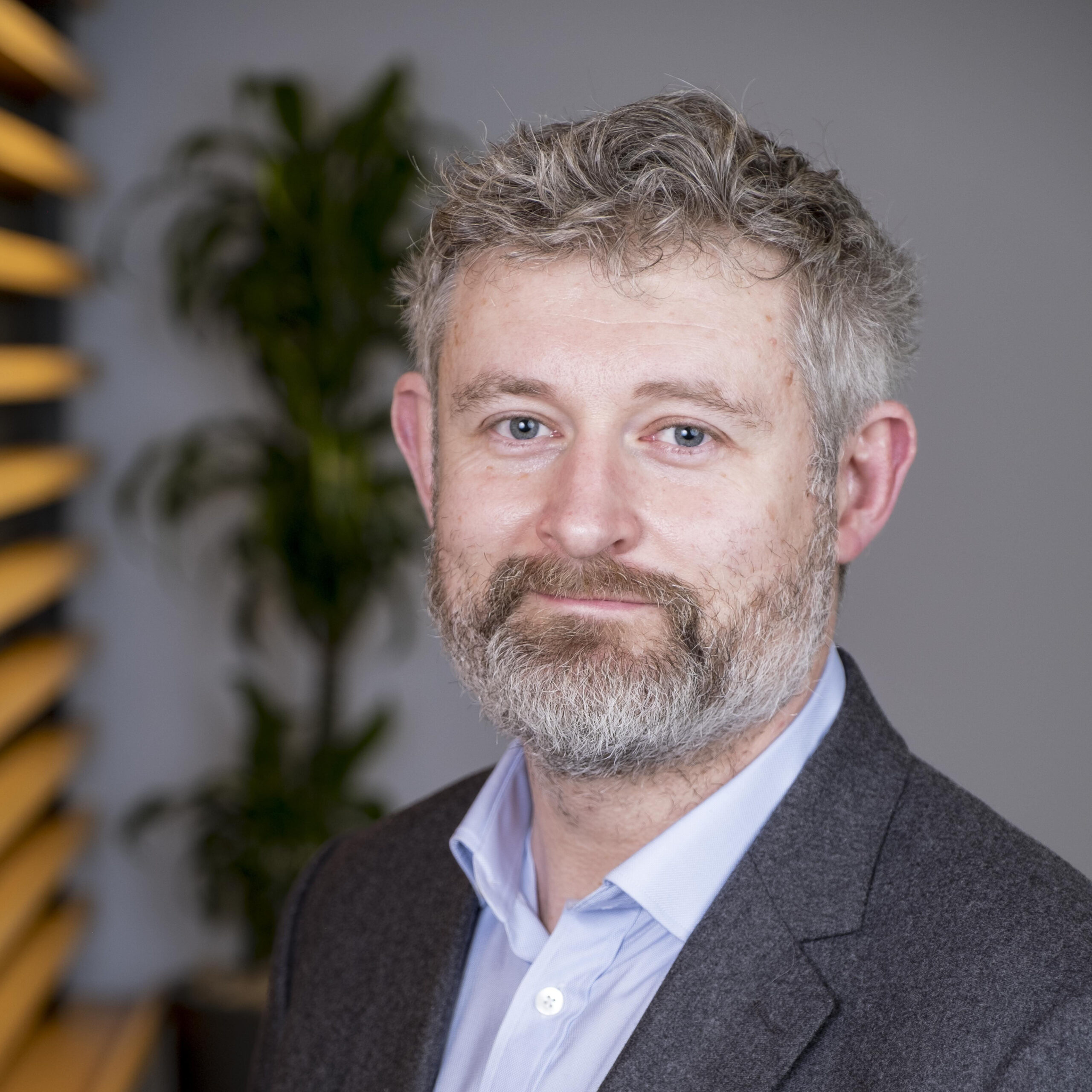What does it take to reimagine workforce productivity across one of the world’s largest healthcare systems?
Nick Kennell sat down with Rahul Chodhari, Medical Productivity Lead, NHS England, to explore how the NHS is evolving its workforce model to meet the demands of modern care.
From flexible working and digital clinics to AI-enabled rostering, Rahul shares his experience on how operational innovation is unlocking capacity and improving care delivery.
In this episode, they explore:
- The workforce shift and what it means for care
- How digital tools are reshaping job plans, clinics and capacity
- Designing policies and systems around how clinicians want to work
- Real examples of smarter scheduling and workforce deployment
- Why collaboration between clinicians, ops and business leaders is key
All views expressed are based on personal experience and do not represent the views of NHS England.

Nick: Hi everyone and welcome back to our In the Spotlight series. I’m Nick Kennell, a partner at Gate One and today we’re joined by Rahul Chodhari, a consultant who’s been leading a number of workforce transformation initiatives in the NHS. Rahul, it’s fantastic to have you here with us today.

Rahul: Thank you Nick. It’s great to be here. As you said, I’m a consultant, a paediatrician at NHS Hospital and I support NHS England in areas of medical workforce optimisation as well as in new hospital programme. My passion about this area lies in understanding how our clinical workforce is organised, deployed and how effectively we can support their well being. At the same time, assist in reducing waiting times.

Nick: Fantastic. So today we’re putting the spotlight on productivity workforce transformation in the NHS and looking at how the workforce is evolving and what that means for the future of care delivery. From your perspective, Rahul, what are the biggest challenges and changes shaping workforce productivity in the NHS?

Rahul: I think that’s a very deep and a big question. We could spend three days here, but in a summary, I think it’s worth taking a little bit of a context. What was our state of our workforce just before COVID arrived and how Covid has had an impact in terms of our workforce numbers as well as the delivery of care? I’m focusing on clinical workforce and my understanding is more around medical workforce rather than other clinical workforce such as nurses and allied health professionals. What we have seen is there has been a significant drop in number of activities the way National Audit Office records, such as clinic patients or operating theatres or length of stay and each of those parameters seems to have gone in a worse direction compared to pre-Covid times. At the same time, the head count for the medical workforce has increased very sharply.
For the first time we have a much, much younger clinical medical workforce who is learning to get more experience. And as a result of this shift, what we are seeing is that the per consultant output, whether it’s clinics, theatres, surgeries, ward rounds, has dropped by roughly 15 to 20%. And that requires a bit of an examination and understanding and the factors which caused them. We have some understanding of factors affecting it. Some are secular trends, some are transient productivity bottlenecks and some are operational improvements which are within our gift to build on.

Nick: In terms of those kind of improvements and opportunities looking forward, what do you see the role of technology in supporting new models of working?

Rahul: So technology is at the heart of anything we are doing. Take an example of my children. They have known mobile phone, a smartware IT since their birth and we are only scratching 1% of the capability of our phones. So over a period of next 10 to 15 years, we are going to see a tremendous input coming through the technology. But before we think about what technology can do, it’s worth understanding that there has been a change in the way the workforce wants to work as well. And understanding what they want to do will also matter how technology evolves?
For example, flexible working time is on the front mind of our new consultants who take up the post. Around 2000 and 2001, roughly 90% plus consultants accepted 100% or a temp PA post, a full time post. As of last year, only 60% are accepting full-time posts. Now that trend is going to continue and many senior consultants are dropping their PAs earlier and earlier, less than 10 PA. So there is something about how workforce wants to work. The technology has dual impact. So for example, if you introduce electronic patient records, which now roughly 70, 80, 90% of the country’s hospitals have got, you get a transient loss of clinical activity as workforce adjust to learn from paper based activity to electronic based activity. And these transitions aren’t easy. They are like going from horse carriages to car driving. And it means we need to take those transition periods into account while measuring the productivity. On the other side, the technology movement is awesome. For example, the way in which technology can see your capacity of your entire organisation in terms of its availability on a snapshot base as well as on a weekly monthly annualised basis, allows an organisation to improve their resilience, allows an organisation to know their actual capacity and race towards operational improvement to deliver it.
To give you an example, 1000-consultant large hospital would have roughly 50, 60,000 clinics to deploy and that is a very sizable volume. And in every organisation I have gone, at best they’ve been able to deploy about 80% of that capacity. So even a 10% improvement will give another 4 to 5000 clinic worth of capacity which can assist and at a scale of NHS, that is a significant amount of capacity available which can be achieved through a good quality operational improvement.

Nick: Yeah, just thinking about that change you’ve described as the move to much more or much less full time models and more flexible working. It also means it needs the technology because it’s so much more complex than when you’re trying to manage a rota and trying to kind of determine the job plan.

Rahul: I think you’re spot on. And also there is a variability coming through. For example, digital and remote consultations are going to become a cornerstone a variety of our prevention or follow up related care. And they also offer tremendous flexibility to our workforce. For example, in some of the hospitals, when we try to introduce digital and virtual clinic at 9am or 1pm slots, it didn’t work. But offering a flexible 10 o’clock to 2pm slot had a fantastic uptake because it allowed families to do a school run, travel in peak hour traffic. This gave them that breathing space as it was needed. So technology is here, it’s about how we operationally deploy it.

Nick: Absolutely. And I guess for it to really work as well in terms of that operational deployment, it will need to be backed by the right kind of local policies to support it and enable it. I’m thinking about moving from a model in which the assumption is full time working to one with more flexible part time working almost built into the way the policies work. And I guess then also maybe driving more kind of self service in how people access their shifts and determine when they’re going to be on site. Is that kind of, is that stuff you’ve seen effectively deployed?

Rahul: I think Nick, you’re spot on. We have seen excellent examples of self rostering throughout the country and technology enables individuals to do it. We know that an average hospital with an emergency department would run somewhere around 2 and a half to 4,000 hours per week of a doctor’s deployment. A maternity department will run about 1800 hours and paediatrics will run about 1600 hours of junior doctors’ deployment alone per week.
So each and every model of this self deployment, particularly in a large workforce, teams like anaesthetics, emergency department, paediatrics, obstetrics, general surgery, is a way forward and more and more artificial intelligence enabled products are coming and they need refinement, they need a human-centric touch at the front end and the back end. They are not the products which churn out a good quality rota rapidly. So human interaction will be needed. But it could be considerably less intensive Excel sheet formulas than what we are asking many of our hospital rota makers to do.

Nick: Absolutely. What’s really clear in what you’re describing is there’s multiple factors at play here. There’s then kind of multiple levers to drive a change. But it really does come down to kind of an integrated change programme. It’s not simply let’s deploy a bit of rota ring technology, let’s change a policy here. It is an integrated approach. We’ve spoken about kind of operations teams, those holding the rota, the clinicians themselves. What’s your advice for how to design an integrated programme and co-design it with those affected?

Rahul: I think that’s a really important part of our journey. Throughout the country, we have got about three and a half thousand triumvirates which are a combination of clinical director, operations manager, business manager and they are tasked with delivering roughly between 2 and 6,000 hours of clinical deployment every week. So education, teaching, training, understanding that the contracts are for an individual who needs to understand what’s their next year workload on a weekly basis. But this triumvirate needs to know what their capacities on an annual basis would matter a lot.
So for example, a large size paediatric service would have roughly about 1200 clinics a year. So you have some idea of how many clinics you’re going to deliver per month and track is a way forward in that journey. We do believe this requires a lot of support, particularly for all of us to have a respect for each other’s specialism. The medics understand the risk about how the clinical services work. Operations managers bring in that resilience and deployment and infrastructure and finance and other business managers bring in what is the available envelope. And understanding each other’s specialism and and levering it for your department is probably the best way to go forward.

Nick: Brilliant. Thank you so much, Rahul. It was great to hear your insights today. To our listeners, we hope you enjoyed this In the Spotlight episode and we’ll see you next time for another Spotlight conversation.
We’re passionate about working shoulder-to-shoulder with the public sector to transform outcomes for people.

